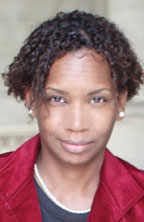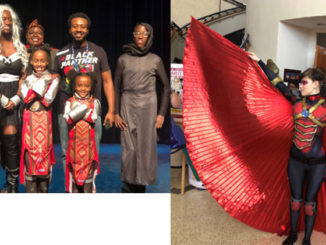 Same old problem, same old response
Same old problem, same old response
By Lauren Victoria Burke, NNPA Columnist
In 1983, it was Michael Stewart, 25. He was a graffiti artist who was beaten to death in police custody in New York. No one paid a price for his death. On the day of Stewart’s arrest, the Committee Against Racially Motivated Police Violence was holding a news conference. There were vigils. That was 31 years ago.
For anyone who wonders why young people in Ferguson don’t want to have anything to do with old leadership, think on that.
Brace for the usual cast of “mis-leadership” characters to “funnel Black peoples energies into official channels that go nowhere,” to quote activist Glenn Ford. African Americans have been dealing with police brutality for decades. Until new leadership and forceful solutions arrive the community will continue to deal with it. .
And there’s plenty to deal with.
In, 1999, Amadou Diallo, 23, was shot 19 times. The officers were acquitted.
In 2004, Tim Stansbury, 19, was shot by a cop for no reason on a roof. A grand jury ruled it “an accident.” No one was prosecuted.
Ten years later, the same thing happened. Akai Gurley, 28, was shot dead in Brooklyn in a stairwell by a cop in another “unfortunate tragedy.”
Eric Garner was strangled to death on a sidewalk by Daniel Pantaleo, a cop with two previous lawsuits against him, one of which the city paid damages. It’s likely Pantaleo will pay no price for Garner’s death.
Earlier this month Tamir Rice, 12, was shot less than three seconds after the police arrived.
In August, John Crawford, 22, was shot dead in a Wal-Mart in Ohio looking at a toy gun.
In St. Louis, while everyone was discussing the case of Michael Brown being shot dead by Ferguson Police Officer Darren Wilson, cops shot Kajieme Powell, 25, to death 16 seconds after their arrival.
Vonderrick Myers, 18, was shot 17 times by an off duty cop a month after Brown was shot.
Again, no one indicted.
St. Louis Police Chief Sam Dotson lied to reporters about Powell’s actions, saying Powell was holding a knife over his head with “an overhand grip” within “three or four feet” of officers. Then – whoops – a video surfaced showing Powell doing no such thing.
“Young Black males in recent years were at a far greater risk of being shot dead by police than their white counterparts – 21 times greater,” according to a ProPublica study in October. The incidents happen at a time when crime is at a record low in the U.S.
Many of the 600,000 police officers in America do a great job. But it cannot be ignored that the cases of Garner, Brown, Powell, Myers, Gurley and Rice occur at a time when death in the line of duty for cops is at its lowest point in 40 years. In 2013, the fewest number of cops were murdered in the line of duty: 27. That was a 44 percent decrease from the 49 officers killed in 2012.
So what is it? Why now? Why are cops drawing their guns in dark stairwells with no verified threat? Why couldn’t Darren Wilson arrest a flip-flop clad jaywalking alleged cigar thief without shooting him to death? Is it poor training? Is it low IQ cops joined with low hiring standards? Is it watching too many movies? Some even theorize it’s a backlash to President Obama. Whatever it is, the problem has long needed political attention.
What is it about American police that in 2013, 461 people were shot dead by them? No other industrialized nation has a stat anywhere close to that. But the factually-challenged, led by Rudy Giuliani, who loves race games, are suddenly obsessed with Black on Black crime. Speaking on NBC’s “Meet the Press,” former New York City mayor said, “Ninety-three percent of Blacks are killed by other Blacks.”
In 2011, 6,329 Black people were murdered in the U.S. – 93 percent by other Blacks. Whites kill each other at a similar rate. There is little difference between the rate of Blacks and Whites is because most homicide victims know their murderer. What Guiliani left out was the chances of being murdered in the U.S. are 1 in 19,000. The odds of dying of heart disease is 1 in 517.
That is not to say changes are needed. Body cameras on all police officers, a Justice Department update of their racial profiling language for federal police, a federal investigation into local fines and St. Louis municipal government and an end to Pentagon program 1033 would be a start.





Be the first to comment